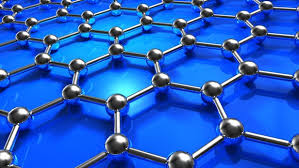
Breaking News
 Will Mayor Zohran Mamdani's Utopian Ideas Destroy NYC?
Will Mayor Zohran Mamdani's Utopian Ideas Destroy NYC?
 Schumer And Jeffries Demand Meeting With Trump To End Record Gov't Shutdown
Schumer And Jeffries Demand Meeting With Trump To End Record Gov't Shutdown
 President Trump Declares SNAP Benefits on Hold Until 'Radical Left Democrats OPEN the Government
President Trump Declares SNAP Benefits on Hold Until 'Radical Left Democrats OPEN the Government
 ChatGPT will no longer give health or legal advice
ChatGPT will no longer give health or legal advice
Top Tech News
 Japan just injected artificial blood into a human. No blood type needed. No refrigeration.
Japan just injected artificial blood into a human. No blood type needed. No refrigeration.
 The 6 Best LLM Tools To Run Models Locally
The 6 Best LLM Tools To Run Models Locally
 Testing My First Sodium-Ion Solar Battery
Testing My First Sodium-Ion Solar Battery
 A man once paralyzed from the waist down now stands on his own, not with machines or wires,...
A man once paralyzed from the waist down now stands on his own, not with machines or wires,...
 Review: Thumb-sized thermal camera turns your phone into a smart tool
Review: Thumb-sized thermal camera turns your phone into a smart tool
 Army To Bring Nuclear Microreactors To Its Bases By 2028
Army To Bring Nuclear Microreactors To Its Bases By 2028
 Nissan Says It's On Track For Solid-State Batteries That Double EV Range By 2028
Nissan Says It's On Track For Solid-State Batteries That Double EV Range By 2028
 Carbon based computers that run on iron
Carbon based computers that run on iron
 Russia flies strategic cruise missile propelled by a nuclear engine
Russia flies strategic cruise missile propelled by a nuclear engine
 100% Free AC & Heat from SOLAR! Airspool Mini Split AC from Santan Solar | Unboxing & Install
100% Free AC & Heat from SOLAR! Airspool Mini Split AC from Santan Solar | Unboxing & Install
Bacteria recruited to produce graphene on the cheap

One of the main hurdles though is that it's tricky to manufacture on large scales. Now researchers at the University of Rochester have recruited bacteria to make the stuff, which is cheaper and faster than current methods and doesn't require harsh chemicals.
Graphene production has come a long way since researchers first used sticky tape to peel single-atom-thick layers off of lumps of graphite. Now it's often made by chemical vapor deposition, or by shredding graphite into graphene oxide then chemically reducing it. Both of those methods generally require the use of harsh chemicals though, leading scientists to find softer alternatives.
For the new study, the team found that a bacteria called Shewanella worked well as one such alternative.



